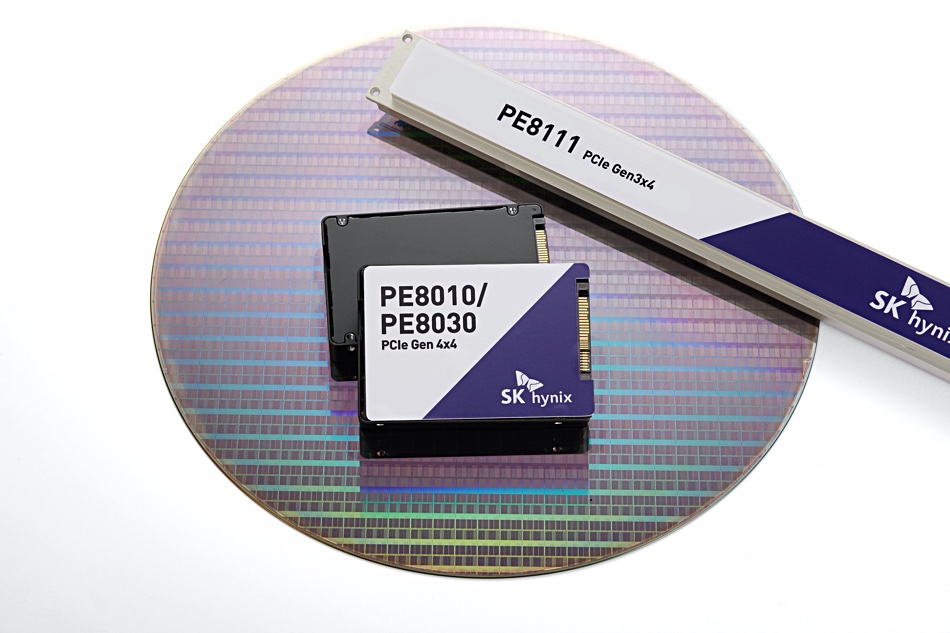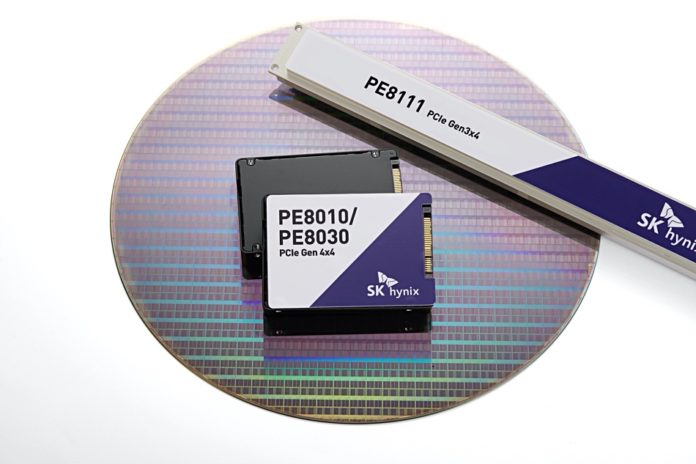SK hynix has announced its first PCIe gen 4 SSDs.
The Korean memory maker is sampling two PCIe 4.0 drives, the 96-layer TLC flash PE8010 and PE8030. It is also prepping the 128-layer TLC PE8111.
The PCIe 4.0 bus interface has a 16Gbit/s data link speed, with up to 16 lanes. This delivers 64GB/sec, which is twice as fast as the current PCIe gen 3’s 32GB/sec maximum.
Update: The capacity range for the PE8010 and 8030 is 1TB to 8TB.
No data sheets are available for the two new drives. An SK Hynix spokesperson told us: “We are not allowed to open the data sheets to the public.”
The company has not revealed latency, endurance or warranty details. But the new drives use a maximum of 17W – for what that’s worth.
The PE8010 is designed for read-intensive use and the PE8030 is intended for mixed read and write use. They both come in the 2.5-inch U.2 format. Basic performance numbers are up to 1,100,000/320,000 random read and write IOPS and 6,500/3,700 MB/sec sequential read and write bandwidth.

The PE8111 uses newer 128-layer 3D NAND technology and comes in the EDSFF IU long ruler format, and a 16TB product is slated for sampling in the second half of this year. A 32TB product will follow suit but we do not have a date range for sampling. Both use a 1Tbit die and are optimised for Facebook’s Open Compute Project (OCP) storage products.
The 16TB SSD’s performance is pedestrian compared to the PE8010 and 8030, with random read and write IOPS up to 700,000/100,00 and sequential read and write bandwidth of 3,400/3,000 MB/sec.
Update; SK hynix has explained that the PE8111 uses the PCIe gen 3 bus, not the newer and faster PCIe gen 4 bus. That is why its performance is so much less than the PE8010 and PE8030 drives.
We can compare SK hynix’s PCIe gen 4 SSDs with recently announced competitor products and have tabulated the summary data.

The SK hynix PE8010/8030 SSDs look faster than Kioxia’s CD6 – but not its CM6. The Aorus, like Seagate’s FireCuda 520, is in the slow lane for sequential reading. Liqid’s LQD4500 is a class apart, but it uses 16 PCIe 4.0 lanes whereas the others max out at four lanes.
Also, this Liqid AIC format drive is intended for use in composable server systems and not as a commodity data centre server SSD.
SK hynix is a relatively new entrant to the enterprise SSD market and its competitors include Kioxia, Western Digital, Micron and Samsung.








